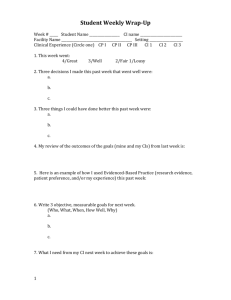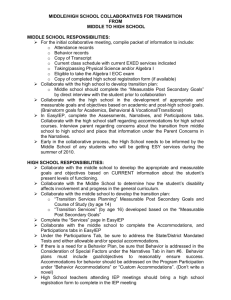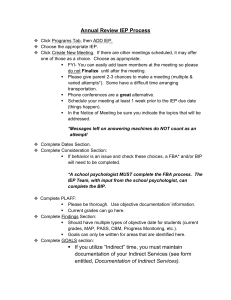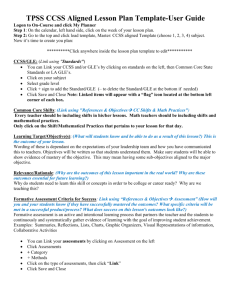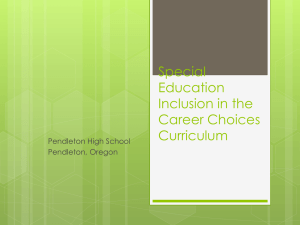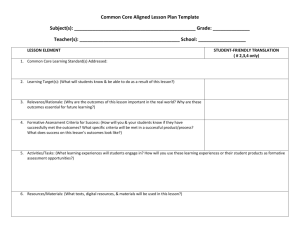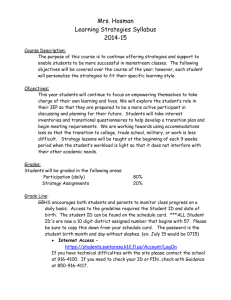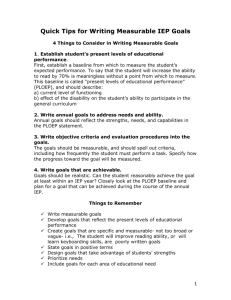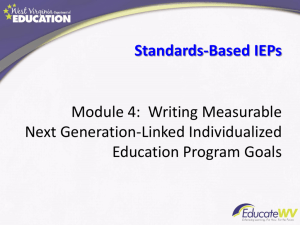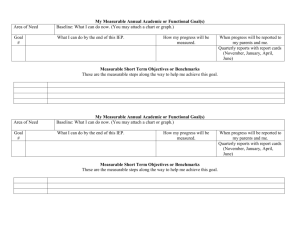Annotated Template
advertisement
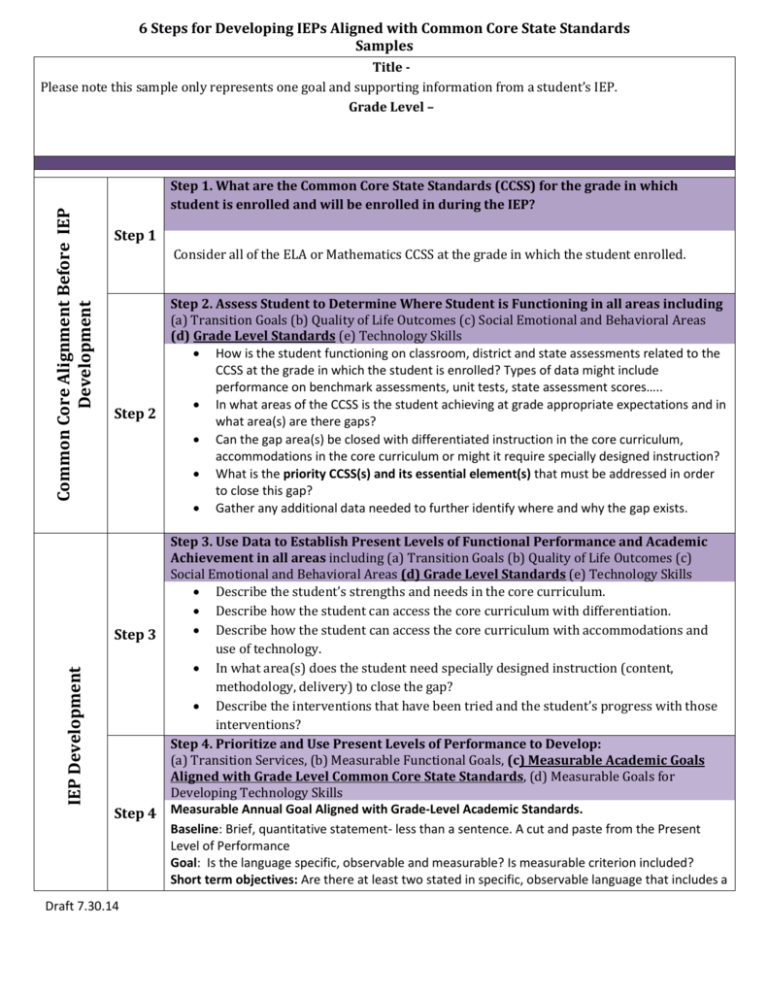
6 Steps for Developing IEPs Aligned with Common Core State Standards Samples Common Core Alignment Before IEP Development Title Please note this sample only represents one goal and supporting information from a student’s IEP. Grade Level – Step 1. What are the Common Core State Standards (CCSS) for the grade in which student is enrolled and will be enrolled in during the IEP? Step 1 Consider all of the ELA or Mathematics CCSS at the grade in which the student enrolled. Step 2 IEP Development Step 3 Step 4 Draft 7.30.14 Step 2. Assess Student to Determine Where Student is Functioning in all areas including (a) Transition Goals (b) Quality of Life Outcomes (c) Social Emotional and Behavioral Areas (d) Grade Level Standards (e) Technology Skills How is the student functioning on classroom, district and state assessments related to the CCSS at the grade in which the student is enrolled? Types of data might include performance on benchmark assessments, unit tests, state assessment scores….. In what areas of the CCSS is the student achieving at grade appropriate expectations and in what area(s) are there gaps? Can the gap area(s) be closed with differentiated instruction in the core curriculum, accommodations in the core curriculum or might it require specially designed instruction? What is the priority CCSS(s) and its essential element(s) that must be addressed in order to close this gap? Gather any additional data needed to further identify where and why the gap exists. Step 3. Use Data to Establish Present Levels of Functional Performance and Academic Achievement in all areas including (a) Transition Goals (b) Quality of Life Outcomes (c) Social Emotional and Behavioral Areas (d) Grade Level Standards (e) Technology Skills Describe the student’s strengths and needs in the core curriculum. Describe how the student can access the core curriculum with differentiation. Describe how the student can access the core curriculum with accommodations and use of technology. In what area(s) does the student need specially designed instruction (content, methodology, delivery) to close the gap? Describe the interventions that have been tried and the student’s progress with those interventions? Step 4. Prioritize and Use Present Levels of Performance to Develop: (a) Transition Services, (b) Measurable Functional Goals, (c) Measurable Academic Goals Aligned with Grade Level Common Core State Standards, (d) Measurable Goals for Developing Technology Skills Measurable Annual Goal Aligned with Grade-Level Academic Standards. Baseline: Brief, quantitative statement- less than a sentence. A cut and paste from the Present Level of Performance Goal: Is the language specific, observable and measurable? Is measurable criterion included? Short term objectives: Are there at least two stated in specific, observable language that includes a measurable criterion? Step 5. Establish Type of Data to be Collected, How Often, and Progress Monitoring Report Progress Monitoring Data to Families Step 5 Step 6 Progress Measurement: (Identify assessment to be used and how often data will be collected?): Report Progress Monitoring Data to Parents: (How often?) Step 6. Identify Specifically Designed Instruction and Include Related Services Identify the instruction and classroom assessment Accommodations and Program Modifications to Provide Access and Progress in the General Curriculum Identify Assistive Technology devices and services need for instructions or assessment Determine Accommodations for State and Local Assessment Specially designed instruction: Does the language include information on content, methodology or delivery? Accommodations and/or program modifications: Draft 7.30.14

